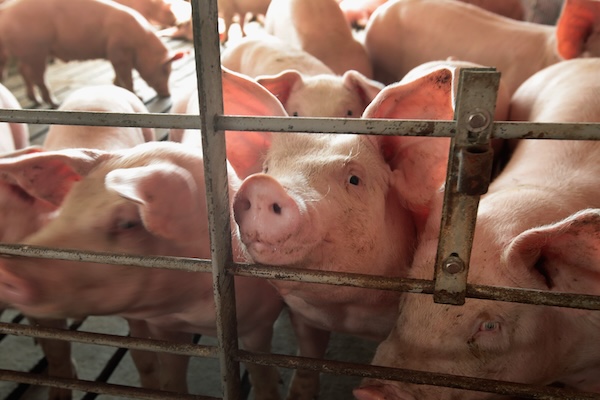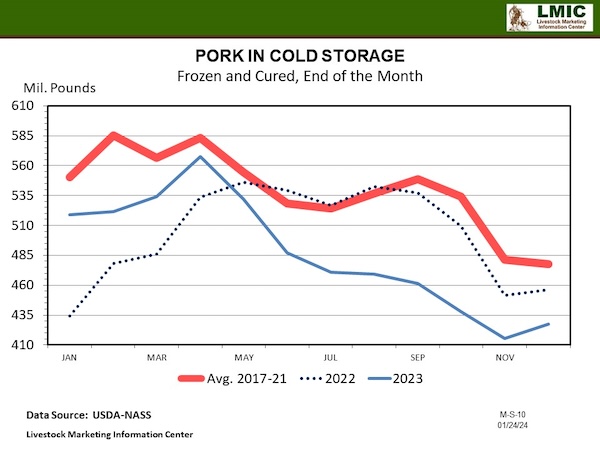The start of the new year officially marked the start of big changes for the pork industry with California’s controversial “Proposition 12” going into effect. That means pork producers that want to sell their products in the state must comply with its larger animal housing requirements. So far, industry stakeholders have mixed opinions on the law’s initial impacts and how the market might respond going forward, including unintended foreign trade consequences.
What is Prop 12? For those not familiar, Proposition 12, passed by California voters in 2018, bans the sale of pork, eggs, and veal in California that do not meet the state’s production standards. The law, known as the “Farm Animal Confinement Initiative,” requires that covered animals be housed in confinement systems that comply with specific minimum standards for freedom of movement that are larger than current industry standards. Prop 12’s egg and veal requirements went into effect some time ago, but the pork provisions were delayed until January 1, 2024, to allow non-compliant pork already in the state to make its way through the supply chain. A similar law known as “Question 3” is now in effect in Massachusetts.
Who does Prop 12 impact? Any pork producer that wants to sell their meat in California must comply with the state’s production standards, regardless of where they are located. As of the law’s effective date, an estimated 4% of US pork producers were in compliance. The penning rules under Prop 12 require 24-square-feet of space be available for each sow on a hog farm. On an average farm, the estimated investment to retrofit pens is approximately $3.5 million. The National Pork Producers Council (NPPC) notes, “With producers facing average losses of $30 — sometimes exceeding $40 to $60 — on each hog marketed in 2023, most can’t afford the often significant costs of complying.”
Why is California’s market is so powerful? California is responsible for an estimated 13% to 15% of US pork consumption. However, California produces only a small fraction of the estimated 225 million pounds of pork consumed every month. “Even that production number, that 45 million pounds per month, most of that even is out-of-state pigs getting processed in California,” according to Josh Trenary, executive director for the Indiana Pork Producers Association.
How do US producers become Prop 12 certified? Producers have a choice to get Prop 12 certified through the California Department of Agriculture or an accredited third-party agent. CDFA or another certifying agent must conduct an initial on-site inspection of each production unit, facility and site that produces or distributes covered animals or covered products that is included in an operation for which certification is requested. If a split operation, CDFA or another certifying agent will verify the management practices, physical barriers, and standard operating procedures established to prevent commingling of compliant breeding pigs and their immediate offspring with noncompliant breeding pigs. Compliance must be renewed annually. More details are available HERE.
Canada has raised trade concerns about Prop 12: Canada is raising international trade concerns regarding California’s animal confinement law. In a meeting last month with U.S. Agriculture Secretary Tom Vilsack, Canadian Agriculture Minister Lawrence MacAulay said the rules could restrict trade and disrupt supply chains, potentially leading to tariff retaliation against U.S. agricultural goods.
Prop 12 could increase US pork imports: With only a small fraction of US producers in compliance with California law, pork producers around the globe are eager to fill the gaps in the state’s huge market. Several pork exporters in the UK and Canada have already been Prop 12 certified.








